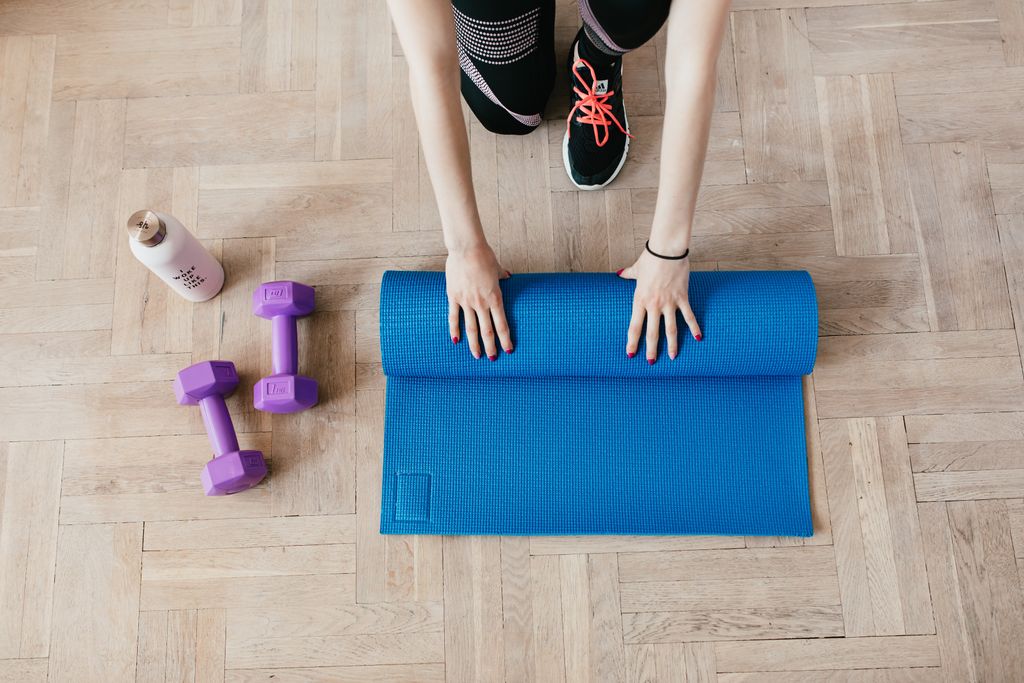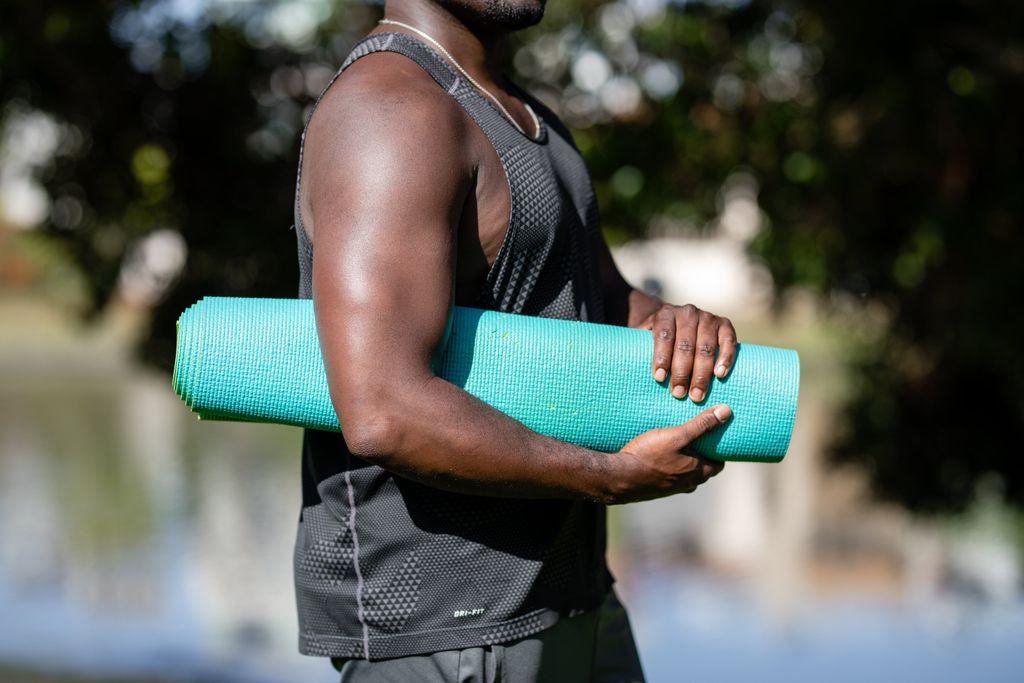
Finding Your Zen: A Guide to the Best Hot Yoga Mats
Hot yoga is a popular practice that requires a special kind of mat to withstand the high temperatures and intense workouts. Choosing the right hot yoga mat can enhance your practice and provide the support and stability you need for a successful session. In this article, we'll explore the key factors to consider when selecting a hot yoga mat and highlight the best options for different types of hot yoga practices.
Key Takeaways
- Selecting the right material is crucial for hot yoga mats.
- Look for features such as grip, thickness, and portability when choosing a hot yoga mat.
- Consider eco-friendly options for a more sustainable practice.
- Different hot yoga practices may require specific mat features.
- Durability and maintenance are important factors to consider when investing in a hot yoga mat.
Choosing the Right Material for Hot Yoga Mats
Natural vs. Synthetic Materials
When selecting a hot yoga mat, the choice between natural and synthetic materials is not just about personal preference, but also about the performance and sustainability of the mat. Natural materials such as cork, rubber, and jute offer a biodegradable option and often provide excellent grip when wet, which is ideal for hot yoga sessions. On the other hand, synthetic materials like PVC, TPE, and NBR are known for their durability and sometimes lower cost.
Eco-friendliness is another factor to consider. While natural materials are generally more environmentally friendly, there are also synthetic options designed to be less harmful to the planet. Here's a quick comparison:
- Natural materials: Biodegradable, better grip when wet, potentially more expensive.
- Synthetic materials: Durable, cost-effective, varying levels of eco-friendliness.
Remember that the right material can enhance your hot yoga experience by providing the necessary support and stability. It's worth investing in a quality mat that aligns with your values and practice needs.
Eco-Friendly Options
When it comes to hot yoga, the environmental impact of your mat can be just as important as its performance. Eco-friendly yoga mats are designed to be kind to the planet, often made from sustainable materials like natural rubber, jute, or cork. These materials are not only renewable but also biodegradable, reducing the carbon footprint of your yoga practice.
Durability is a key factor when selecting an eco-friendly mat, as it translates to less frequent replacements and, consequently, less waste. Here's a quick comparison of popular eco-friendly materials:
- Natural Rubber: Offers excellent grip and cushioning; sourced from rubber trees.
- Jute: Highly durable and has a unique organic texture that provides natural grip.
- Cork: Naturally antimicrobial and provides a smooth surface with good traction when wet.
Remember, the best eco-friendly mat is one that suits your practice while aligning with your values of sustainability and environmental responsibility.
Durability and Maintenance
When selecting a hot yoga mat, durability is a key factor that can greatly affect your practice and wallet over time. High temperatures and frequent sweat exposure demand a mat that can withstand the rigors of intense sessions without deteriorating quickly. Maintenance is equally important; a mat that is easy to clean will ensure a hygienic practice and extend the mat's lifespan.
Cleaning your mat after each session is crucial, especially in hot yoga where perspiration is abundant. Here are some tips for maintaining your mat:
- Use a gentle, non-abrasive cleaner specifically designed for yoga mats.
- Avoid using harsh chemicals that can break down the mat's material.
- Allow your mat to air dry completely before rolling it up to prevent mildew and odors.
- Store your mat in a cool, dry place away from direct sunlight.
Remember, a well-maintained yoga mat can be a long-term companion on your journey to wellness. Regular care not only preserves the mat's condition but also ensures a safer and more comfortable practice.
Features to Look for in Hot Yoga Mats
Grip and Traction
When practicing hot yoga, a mat with superior grip and traction is essential to prevent slipping and to maintain stability during poses. The combination of heat and sweat can make a standard yoga mat slick, but mats designed for hot yoga often feature a textured surface or a moisture-absorbent top layer to enhance grip. Look for mats with a sticky feel or those that are advertised as 'non-slip'.
- Textured surface
- Moisture-absorbent top layer
- Sticky feel
The right mat can transform your hot yoga experience, providing the confidence to hold poses longer and with more precision.
Remember that grip can vary between brands and materials, so it's important to research and possibly test different mats. According to EverydayYoga.com, the eKO mat from the Manduka collection stands out for its traction, especially when wet, making it a top choice for hot yoga enthusiasts.
Thickness and Cushioning
When it comes to hot yoga, the thickness and cushioning of your mat can greatly affect your comfort and stability. A thicker mat can provide extra support for your joints, which is beneficial during poses that put pressure on your knees and wrists. However, too much cushioning might compromise your balance in standing poses.
Comfort should not come at the expense of performance. It's important to find a balance between sufficient padding and a firm enough surface to hold poses effectively. Here's a quick guide to help you decide:
- 1/8 inch (3mm): Standard thickness, a good balance of support and stability.
- 1/4 inch (6mm): Extra cushioning, ideal for those with joint concerns.
- 1/16 inch (1.5mm): Travel-friendly, very thin and portable, but less supportive.
Remember, the right thickness is also about personal preference and the type of hot yoga practice you engage in. Listen to your body and consider how each mat feels during your practice.
Portability and Storage
When it comes to hot yoga, the ease of transporting your mat and the simplicity of its storage can greatly enhance your overall experience. Portability is key for yogis on the go, whether you're commuting to a studio or practicing in the park. Look for mats that come with carrying straps or bags, and consider the weight of the mat as well. Lightweight mats are typically more convenient to carry around.
Storage should not be an afterthought. A good hot yoga mat should roll up tightly and stay secure, not unfurling unexpectedly. Some mats even feature straps or bands to keep them neatly rolled.
- Easy to roll and unroll
- Comes with carrying straps or bags
- Lightweight for effortless transport
Remember, a mat that's a hassle to carry or store can detract from the serenity of your yoga practice. Choose one that complements your lifestyle and allows for stress-free travel and storage.
Best Hot Yoga Mats for Different Practices
Bikram Yoga
Bikram Yoga, known for its intense heat and humidity, demands a mat that can withstand extreme conditions without compromising on performance. The ideal mat for Bikram Yoga should have excellent sweat absorption to maintain grip even as you move through the 26 postures and two breathing exercises characteristic of this practice.
Durability is a key factor, as the mat will be exposed to high temperatures regularly. Look for mats that are specifically designed to be heat-resistant and have antimicrobial properties to prevent odor and bacteria build-up.
- High sweat absorption
- Heat-resistant material
- Antimicrobial properties
- Easy to clean
When selecting a mat for Bikram Yoga, prioritize one that can be easily cleaned and dried, as frequent washing will be necessary to maintain hygiene and mat integrity.
Vinyasa Flow
When it comes to Vinyasa Flow, the pace can be quick, with practitioners moving from one pose to another with each breath. A mat with superior grip is essential to prevent slipping during transitions and to maintain stability during challenging poses. The ideal mat for Vinyasa should also be lightweight, facilitating the dynamic movements of the practice.
Durability is another key factor, as the mat will undergo frequent movement and rolling. Look for mats that balance cushioning with a firm surface to support both comfort and balance. A high-quality mat can make a significant difference in the enjoyment and execution of a Vinyasa Flow session.
The right hot yoga mat for Vinyasa Flow should enhance your practice, not distract from it. It's worth investing in a mat that meets your needs in terms of grip, comfort, and durability.
- Superior grip for stability
- Lightweight for dynamic movement
- Durable to withstand frequent use
- Balanced cushioning for comfort and support
Restorative Yoga
Restorative Yoga requires a mat that supports comfort and relaxation. The ideal mat for this practice should be thick enough to cushion the joints but also stable to aid in maintaining poses for longer periods. Look for mats with a high-density foam or a combination of natural rubber and foam for the best experience.
Thickness is a key factor in choosing a mat for Restorative Yoga. A thicker mat can provide the necessary support for the gentle, meditative poses characteristic of this style. However, the mat should not be so thick that it compromises stability.
- High-density foam: Provides cushioning and support
- Natural rubber: Offers a stable base
- Foam combination: Ensures comfort without sacrificing stability
When selecting a mat for Restorative Yoga, prioritize your comfort and support to enhance your practice and aid in deep relaxation.
Conclusion
In conclusion, finding the best hot yoga mat is essential for a comfortable and effective practice. With the right mat, you can enhance your yoga experience and achieve a deeper sense of zen. Consider the factors mentioned in this article to make an informed decision and elevate your hot yoga sessions.
Frequently Asked Questions
What is the best material for hot yoga mats?
The best material for hot yoga mats depends on personal preference and specific needs. Natural materials like rubber and cork offer excellent grip and are eco-friendly, while synthetic materials like PVC provide durability and easy maintenance.
How do I choose the right thickness for a hot yoga mat?
The right thickness for a hot yoga mat depends on the level of cushioning and support you need. Thicker mats (5mm or more) offer more cushioning for joint support, while thinner mats (3-4mm) provide better stability and balance during poses.
What features should I look for in a hot yoga mat?
When choosing a hot yoga mat, look for features such as grip and traction, thickness and cushioning, and portability and storage. These features will enhance your hot yoga practice and provide the support you need during intense sessions.
Are eco-friendly hot yoga mats durable?
Yes, eco-friendly hot yoga mats made from natural materials like rubber and cork are durable and long-lasting. They offer excellent grip and traction, are easy to maintain, and are biodegradable, making them a sustainable choice for hot yoga practitioners.
Can I use a hot yoga mat for other types of yoga?
Hot yoga mats can be used for other types of yoga, but it's important to consider the specific needs of each practice. For example, a thicker mat may be more suitable for restorative yoga, while a thinner mat with better grip is ideal for Vinyasa flow yoga.
How should I clean and maintain my hot yoga mat?
To clean and maintain your hot yoga mat, use a mild soap and water solution to wipe down the surface after each use. Allow the mat to air dry completely before rolling it up for storage. Avoid using harsh chemicals or abrasive materials that may damage the mat.


